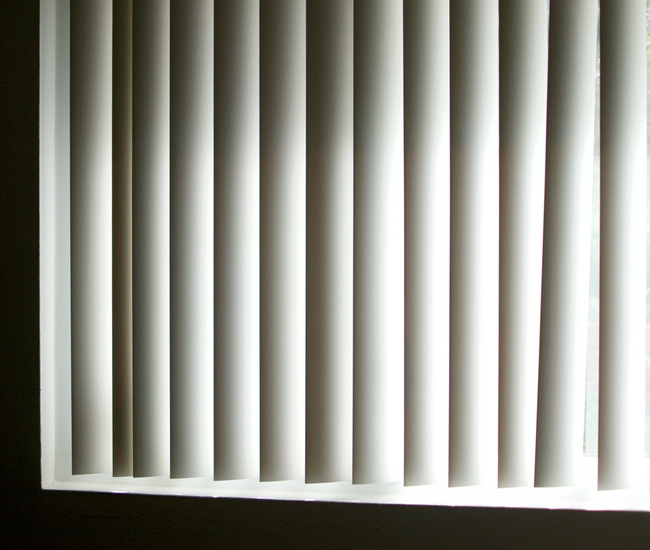When it comes to window treatments, Venetian blinds stand out as the most popular choice. From creating an atmosphere of privacy in a room to adding style and sophistication, these versatile blinds have been used for centuries due to their remarkable features which make them so unique. But, among their lots of advantages, Venetian blinds do have some disadvantages. Here you will learn about different pros and cons of Venetian blinds.
Venetian blinds are a versatile choice when it comes to blinds for windows. Whether you prefer traditional wooden shades or modern aluminum tones, they provide the perfect way to control both natural light and privacy in any room. Not only that – installing them is easy as pie! Plus, their dust-resistant design means minimal maintenance time spent on cleaning. So don’t hesitate: get your home ready for these convenient yet stylish window treatments today! However, Venetian blinds do have lots of disadvantages. So, consider both their benefits and drawbacks before shopping for them.
Pros and Cons of Venetian Blinds

Venetian blinds are a unique window treatment that gives you full control of the natural light in your home, office, or other space. With minimal adjustments, they provide optimal temperature regulation when needed while giving style to any decorating scheme – available in an array of colors and textures! However, they do have some disadvantages. For example, they are not fit for large windows and do not provide complete blackout coverage. Here are the pros and cons of Venetian blinds.
Pros
- Versatility: One of the top pros of Venetian blinds is that they are available in a wide range of materials, sizes, styles, and colors, making them versatile window treatments to suit different types of interiors.
- Privacy Control: With Venetian blinds for windows, you can easily adjust the angle of the slats to control the amount of light and privacy you need in your room.
- Easy to Clean: Venetian window blinds are easy to clean and maintain window coverings, as you can simply wipe them down with a damp cloth. Also, you can use a vacuum cleaner to remove dust or dirt.
- Cost-Effective: Compared to other window treatments for homes and offices, Venetian blinds are relatively affordable, and they offer good value for your money.
- Durable: Venetian blinds are made from strong and durable materials. So, they are a long-lasting window treatment option.
- Insulation: Some types of Venetian blinds can help insulate your home to keep it cooler in the summer and warmer in the winter.
- Light Control: Venetian blinds for windows allow you to adjust the amount of light that enters your room, creating the desired atmosphere.
- Easy to Install: Venetian blinds are easy-to-install window treatments. So, you can fix them to your windows with a few basic tools and some easy DIY tips.
- Style: Venetian blinds for homes and offices can add a touch of style to your interior decor, as they come in different color and design options.
- UV Protection: Some varieties of Venetian window blinds can protect your furniture and carpets from fading due to the harsh UV rays.
- Safety Options for Children and Pets: Venetian Blinds offer enhanced safety options for children and pets when compared to traditional curtains or drapes. The cords on Venetian blinds have been designed according to strict guidelines set by the Window Covering Manufacturers Association (WCMA) which ensures they are safe for use around children or pets. However, they also come with cordless lift systems, such as top-down, bottom-up, motorized, and smart lift mechanisms. With the cords removed, there will be no risk of choking or entanglement for your children.
- Minimal Maintenance: They’re incredibly durable and require minimal maintenance – no more worrying about dusting off heavy curtains regularly! As Venetian blinds require minimal maintenance, they are a convenient option for busy households.
- Noise Reduction: Venetian blinds can help reduce noise from outside, creating a quieter indoor environment.
- Energy-Efficiency: Some types of Venetian blinds for windows can help reduce energy costs by keeping your home cool in the summer and warm in the winter.
- Customizability: Venetian blinds can be customized for size and style to fit your specific window dimensions and decor.
- Ease of Operation: Venetian blinds for windows are easy to operate, as you can simply tilt the slats or raise and lower the blinds with a cord, wand, or a cordless lift system.
- Ease of Replacement: If one or more slats of Venetian blinds get damaged, you can easily replace them without having to replace the entire window treatment.
- Wide Range of Sizes: Venetian blinds for homes and offices come in different sizes, making them suitable for all types of small and large windows.
- Variety of Materials:

Venetian blinds are available in a wide range of materials, such as wood, aluminum, and PVC, giving you more options to choose from.
- Timeless Window Treatments: Venetian blinds for windows have been around for centuries and are a timeless classic that will never go out of style.
Cons
- Dust Accumulation: The horizontal slats of Venetian window blinds can accumulate dust and dirt. So, they may require regular cleaning.
- Some Types Provide Limited Insulation: While some types of Venetian blinds for windows offer insulation, others do not provide much thermal protection.
- Noise: Venetian blinds can make a noise when they are opened, closed, or adjusted, which can be annoying for some homeowners.
- Limited Privacy: While you can adjust the angle of the slats of Venetian blinds, they do not offer complete privacy as some light can still filter through.
- Fabric Slats Difficult to Clean: Venetian blinds with fabric slats can be difficult to clean, as they may require special cleaning products or dry cleaning.
- Can be Heavy: Some Venetian blinds can be heavy, which will make them difficult to raise and lower.
- Limited Light Control: Venetian blinds can only adjust the angle of slats, but they cannot provide complete blackout or nightfall functionality.
- Easily Damaged: Venetian Blinds can be easily damaged if not handled carefully.
- Privacy Leakage: Venetian window treatments may not provide enough privacy if their slats are not adjusted correctly.
- Unsuitable for High Wind Conditions: These window treatments may not be suitable for homes located in high wind conditions, as they can rattle in the breeze.
- Unsuitable for Large Windows: Venetian blinds may not be suitable for homes with large windows.
- Unfit for Irregularly Shaped Windows: Venetian window treatments may not be suitable for homes with irregularly shaped windows.
In conclusion, there’s simply no denying the versatility and convenience offered by Venetian Blinds – if you’re thinking about adding new window coverings to your home or office space then these should be at the top of your list! However, you should read the pros and cons of venetian blinds before making a purchase.
Types of Venetian Blinds
Venetian blinds are like the many colors of a rainbow—they come in a variety of styles, textures, and materials. Whether you’re renovating your home or looking for something to spruce up an office space, Venetian blinds can be just what you need. So, explore all your options when it comes to this popular style of shutters.
- Wooden Venetian Blinds: Wooden Venetian blinds provide a classic look with natural wood grain finishes.
- Aluminum Venetian Blinds: Aluminum Venetian blinds offer durability and flexibility due to their lightweight construction.
- Plastic Venetian Blinds: Plastic Venetian blinds give off a modern vibe.
- Faux Wood Venetian Blinds:

These Venetian blinds combine the best of both worlds – the look of real wood but at an affordable price point. Fabric Venetian blinds make any room feel cozy by adding softness and texture to the interior décor.
No matter which types you choose, each offers its own unique set of benefits and drawbacks for your needs.
How to Install And Maintain Venetian Blinds
Installing Venetian blinds is a relatively simple process, provided you follow the instructions.
- Measuring Window Frame:

First, you’ll need to measure your windows and determine where the blinds should be placed.
- Mounting Brackets: Then mount the brackets into the window casing or wall studs, depending on what type of mounting option you’ve chosen.
- Sliding in Headrail: After that’s done, slide in the headrail – it will click into place when properly positioned.
- Hang Your Blinds: Finally, hang each slat onto its bracket and adjust as needed until they are all level with one another.
Maintenance of Venetian Blinds

Maintaining Venetian blinds is also easy to do if done regularly. Dusting your Venetians weekly can help reduce dust build-up which makes them easier to clean later on. A damp cloth should get rid of most dirt and grime but for tougher stains use a mild detergent or cleaner made specifically for hard surfaces like wood or plastic Venetian blinds. If any individual slats become bent or damaged over time, replacing just those few pieces rather than an entire set will save money and keep them looking newer and longer.
With proper installation and regular maintenance, Venetian Blinds are sure to last many years while providing superior control over light levels and privacy in any room of your home!
Conclusion
While Venetian blinds are versatile window treatments, they are unfit for large windows and make a noise in high wind conditions. In other words, these window treatments have both pros and cons. You should consider both their advantages and disadvantages before making a purchase.
